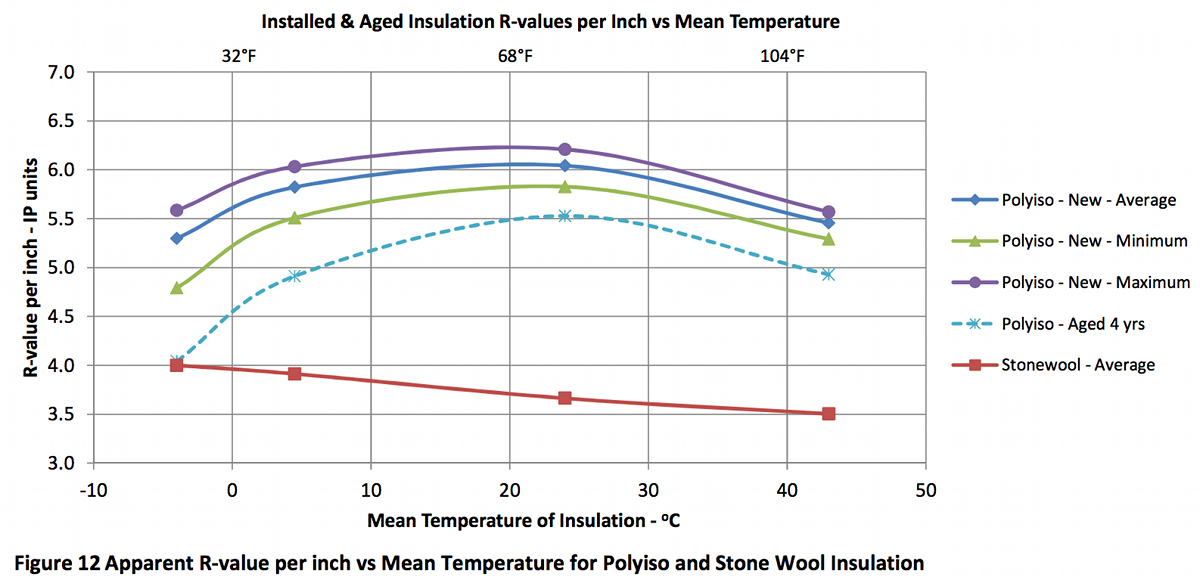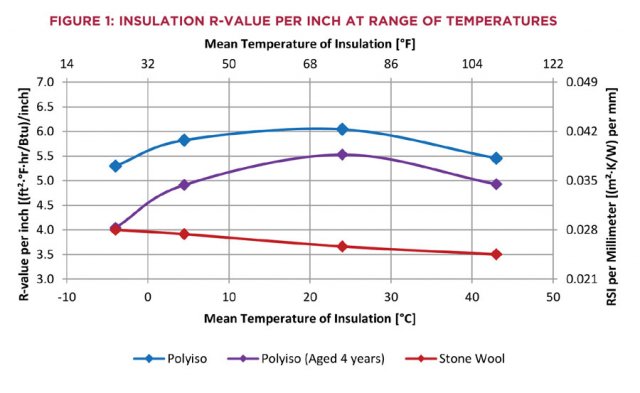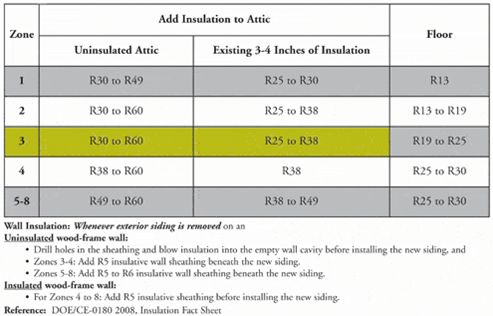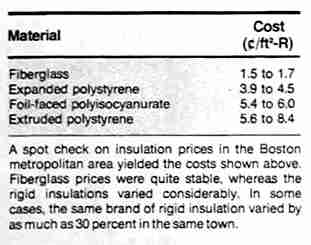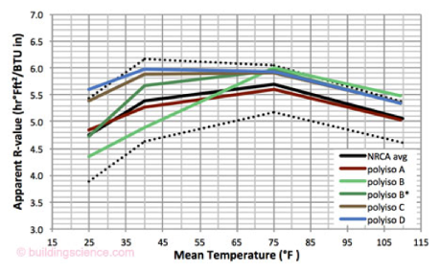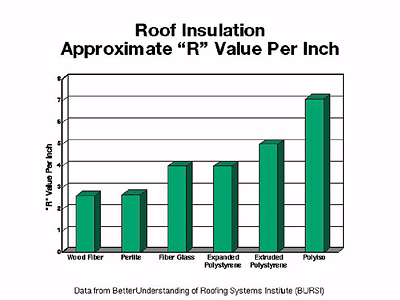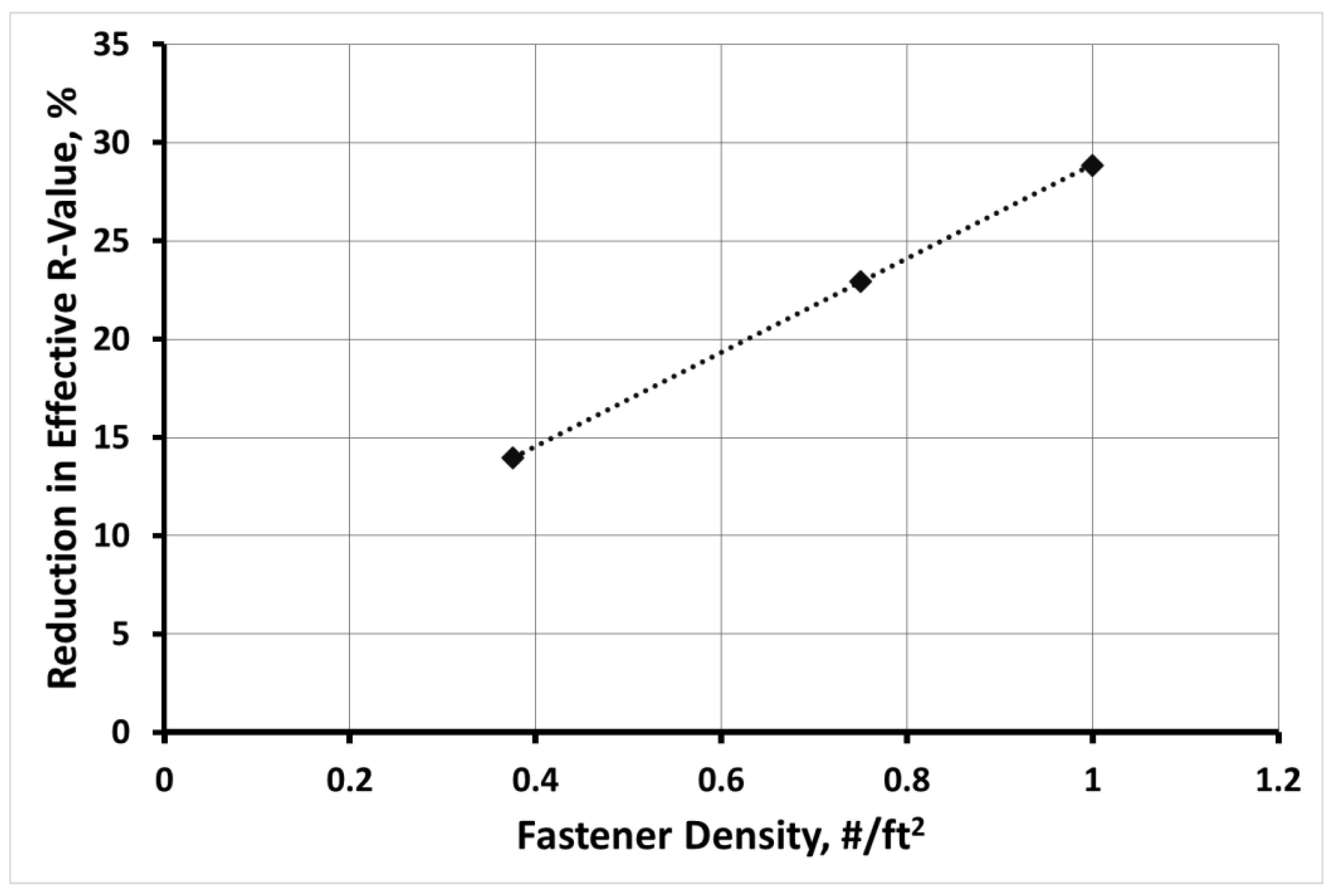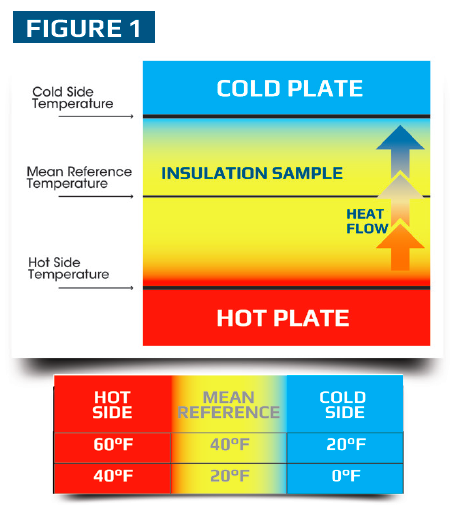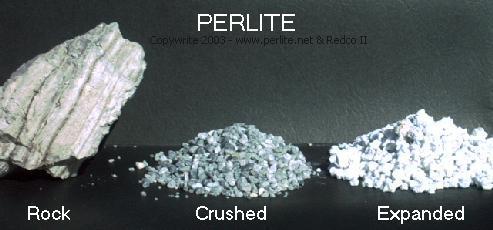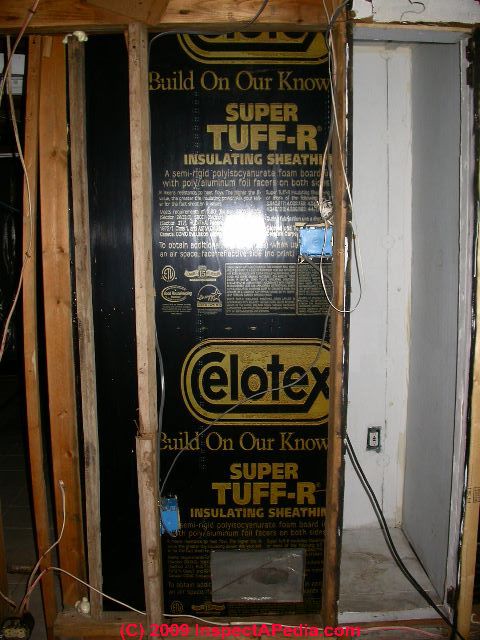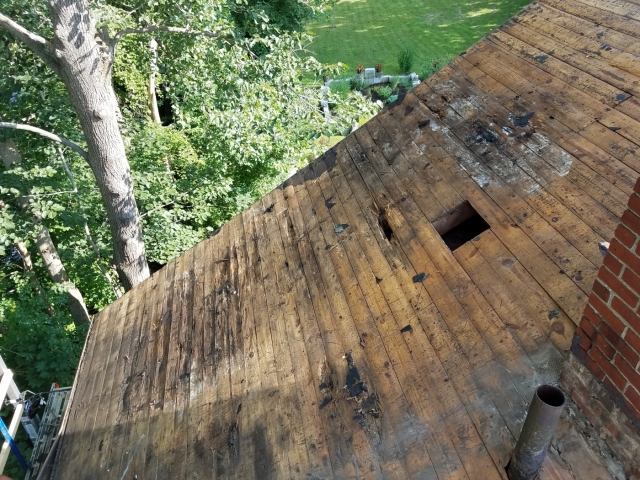Polyisocyanurate Insulation R Value Aged
The in service aged results were compared with the same insulation tested when it was a new material and it was determined the aged insulation had a significantly reduced r value up to 25 at low mean temperatures compared with the new insulation demonstrating the effects of the initial aging on the material s performance.
Polyisocyanurate insulation r value aged. This five year figure corresponds closely to a predicted. As foam ages over time air and blowing agents diffuse in and out of the foam structure resulting in reduced r value. See also material data sheet msds 1511 or msds 1911. Many but not all foam insulations or settle e g.
In 2005 nrca participated in a limited testing program that showed a majority of polyisocyanurate insulation samples tested one to four years after being manufactured had actual r values less than their lttr values. As part of that standard the products must meet r value requirements presented as long term thermal resistance lttr. Rigid polyisocyanurate thermal insulation board. Long term performance and aged r value of polyisocyanurate insulaon march 16 2017 csi chicago chapter.
Because of this phenomenon the r value of polyisocyanurate insulation is not constant. The results also are somewhat lower than the results at 25 f 40 f 75 f and 110 f mean test tem peratures from nrca s 2009 testing. In the unites states polyiso manufacturers typically report r values for wall insulation products measured on full thickness samples following a 180 day conditioning period at 73 f and 50 relative humidity per astm c1289. Polyiso is unique in that the r value increases with the thickness of the foam so three inches of polyiso has a higher r value per inch than two inches.
In 2009 nrca conducted r value testing at various. During late 2014 nrca conducted additional limited r value testing of polyisocyanurate insulation and found r values lower than the current lttr values. Csi2eye 6 astm c1303 lttr is intended to represent the r values of specimens tested ajer five years of aging when stored in a controlled laboratory environment. The information on this page is based on data considered to be true and accurate based on periodic internal.
Its r value is highest soon after man ufacturing and decreases at a relatively significant rate during the earliest portion of its service life. Polyiso has a high r value per inch compared to other insulation products. The r value rule recognizes that the thermal performance of some insulation materials changes as they age e g. 1 when joints penetrations detailed appropriately.
The r value of polyisocyanurate decreases as some of the gasses in the pores from the manufacturing process diffuse out and are replaced with air.


